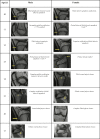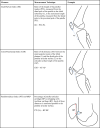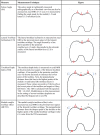Radiographic Evaluation of Pediatric Patients with Patellofemoral Instability
- PMID: 35932425
- PMCID: PMC9463421
- DOI: 10.1007/s12178-022-09780-5
Radiographic Evaluation of Pediatric Patients with Patellofemoral Instability
Abstract
Purpose of review: The purpose of this review is to highlight the radiographic assessments of utility in the evaluation of a pediatric patient with patellofemoral instability to facilitate a thorough work-up. Understanding of these measures is useful in understanding evolving research in this field, providing accurate patient risk assessment, and appropriately directing surgical decision-making.
Recent findings: Recent literature has broadened the radiographic characterization of the pediatric patellar instability and its anatomic risk factors. Knee MRI can inform the assessment of skeletal maturity and novel axial alignment measurements may enhance our identification of patients at increased risk of recurrent instability. Additional improvements have been made in the objective measurement and classification of trochlear dysplasia. Knee MRI-based skeletal age assessments may obviate the need for hand bone age assessments in growing children with patellofemoral instability. Novel objective measures exist in the evaluation of pediatric patellar instability both in the assessment of axial alignment and trochlear dysplasia. Future work should focus on how these measures can aid in guiding surgical decision-making.
Keywords: Axial alignment; Coronal alignment; Pediatric knee morphology; Pediatric patellofemoral instability; Radiographic evaluation in pediatrics; Trochlear dysplasia.
© 2022. The Author(s), under exclusive licence to Springer Science+Business Media, LLC, part of Springer Nature.
Conflict of interest statement
Kevin J. Orellana, Morgan G. Batley, Jie C. Nguyen, and Brendan A. Williams declare that they have no conflict of interest. J. Todd R. Lawrence is a board or committee member of the American Academy of Pediatrics and has received IP royalties from Sawbones/Pacific Research Laboratories.
Figures








References
Publication types
LinkOut - more resources
Full Text Sources
Research Materials

